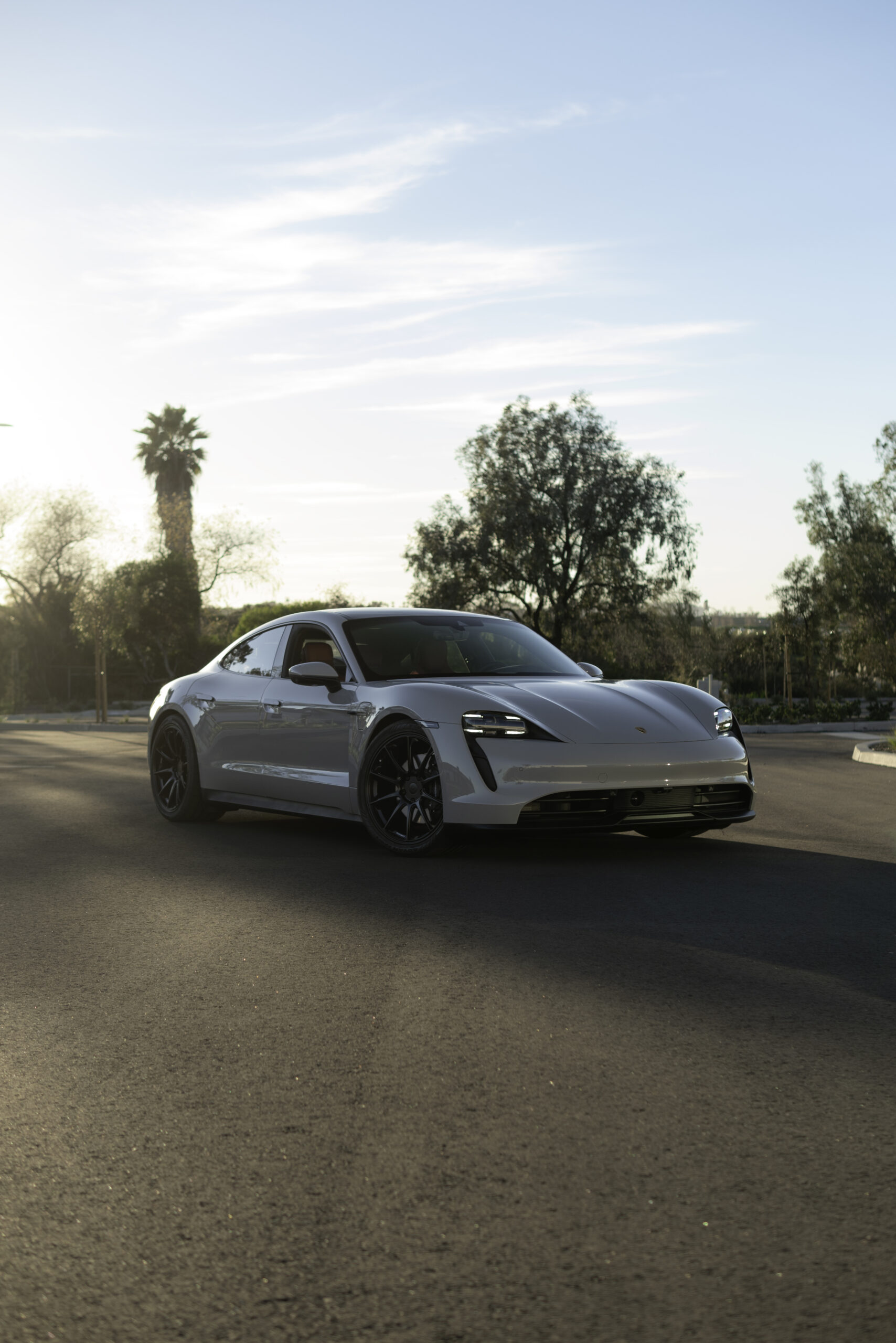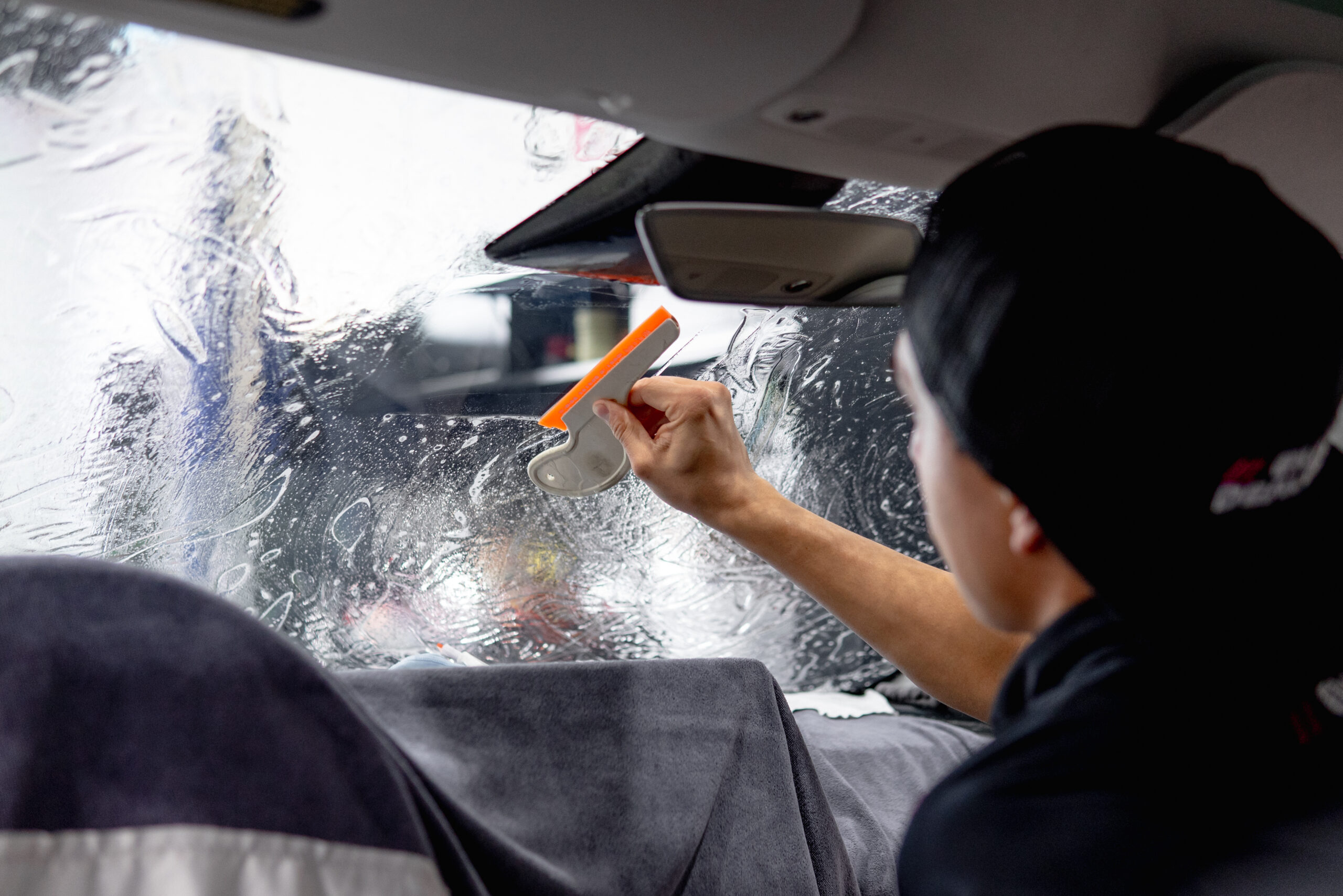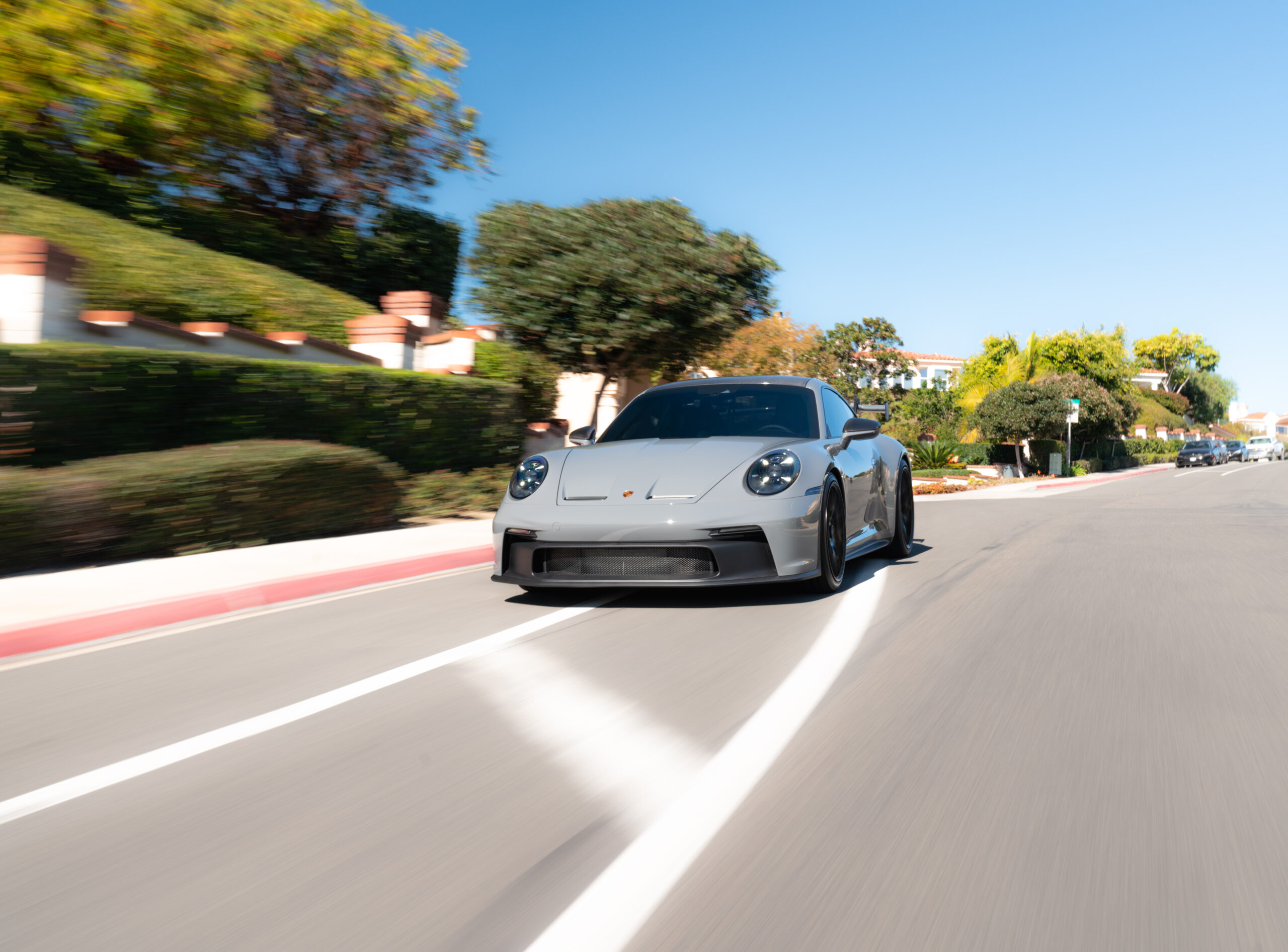Automotive window tinting is a top choice for personalizing and upgrading your ride. It brings not only a sleek look but also a range of benefits, from UV protection to heat reduction and enhanced privacy. However, a big challenge is matching aftermarket tint with factory-installed privacy glass found in new cars fresh from the dealership.
In this blog, we hope to help you navigate this challenge seamlessly. We’ll explore factors like tint darkness, color, and reflectivity to ensure your aftermarket tint complements your factory glass. By the end, you’ll be empowered to make informed choices that elevate your driving experience. Let’s dive in and discover how to choose the perfect window tint to complement your factory privacy glass.
In one of our last posts, we talked more about privacy glass and ceramic window tint – to learn more, read this.

Understanding Factory Privacy Glass: Enhancing Aesthetic Harmony
Factory-installed privacy glass is commonly found on modern vehicles. What sets it apart from aftermarket window tint is its integration into the initial production process. Unlike aftermarket tint, which is applied later, privacy glass is installed during manufacturing, most commonly on the back windows of the car, ensuring a cohesive appearance that complements the vehicle’s design.
A factory privacy glass strikes a balance between privacy and visibility, providing seclusion without compromising safe driving. The construction uses specific materials, enhancing both durability and optical clarity, a contrast to the variable quality of aftermarket tint. Because of its darker color and to avoid issues with window tint laws, it is usually only installed on the rear windows and potentially the sunroof, leaving the front side windows untouched.
Matching your aftermarket window tint with factory privacy glass cannot is incredibly important. Poorly matched tints disrupt the vehicle’s visual cohesion, impacting its overall appeal. Opting for an aftermarket front window tint that closely mirrors the factory privacy glass characteristics preserves the vehicle’s original aesthetic while amplifying privacy and style. Whether you’re choosing a carbon or ceramic film, matching shades is key.

Here are some key notes to keep in mind:
Seamless Integration
Factory-installed privacy glass is built into the glass in the initial vehicle production, unlike aftermarket tint, which is applied afterward. This allows for a unified appearance that complements the vehicle’s design.
Defining Characteristics
Factory privacy glass tint level strikes a balance between privacy and visibility while maintaining safe driving. The color blends nicely with the vehicle’s exterior, contributing to a consistent visual appeal.
Optimal Construction
The construction of factory privacy glass utilizes specialized materials for improved durability and optical clarity, distinguishing it from the variable quality of aftermarket tint.
Crucial Alignment
Ensuring the perfect match between aftermarket window tint and factory-installed privacy glass is essential. Choosing a tint that does not match disrupts the vehicle’s visual coherence.
Preserving Aesthetic
Opting for an aftermarket tint that mirrors factory privacy glass characteristics not only looks better but also enhances privacy and style.
Empowering Guidance
In the next sections, we’ll dive into factors that will help you create a seamless blend between aftermarket tint and factory-installed privacy glass. This guidance will hopefully help you make an informed choice that aligns with your vehicle’s appearance.
Check Out Our Youtube Video: The Truth About Privacy Glass
Factors to Consider When Matching Window Tint to Factory Privacy Glass
Tint Darkness and Color
The concept of VLT (Visible Light Transmission) percentage is key in determining tint darkness. VLT signifies how much visible light passes through the tint and glass. A lower VLT means a darker tint. Choosing tint darkness that matches factory privacy glass closely is crucial for a seamless look, enhancing privacy and style. The color of the tint also matters. Picking a tint color that complements the existing factory tint hue enhances visual harmony. Consider darkness and color for a polished look.

Window Tint Laws
Drawing attention to the window film laws – it is imperative to emphasize the importance of strictly following the local laws while selecting window tint shade to complement factory privacy glass. Compliance with these laws ensures not only a seamless integration of tints but also prevents potential legal issues, allowing you to enjoy the benefits of enhanced privacy and aesthetics without getting a fix-it ticket. If you choose to go with a limo tint for your front windows, there’s a good chance you’ll be getting in trouble.
Reflectivity and Heat Rejection
Understanding window tint reflectivity is essential as it impacts the car’s look and heat rejection capabilities. Reflectivity refers to how much light and heat a tint reflects. Opting for a tint with similar reflectivity to factory privacy glass is key for a uniform appearance. Matching reflectivity levels ensures a consistent look across all windows, maintaining the vehicle’s design integrity and enhancing heat rejection performance.
Choosing the Right Window Tint
Consulting Professionals
When embarking on the journey of matching aftermarket window tint to factory-installed privacy glass, it’s highly recommended to consult experienced professional window tinting shops. These experts possess the knowledge and skills required to achieve a flawless integration that aligns with your vehicle’s aesthetic and functional needs. Their expertise ensures a seamless match but also helps you select the appropriate tint shade, color, and type. Gone are the days of consulting forums for information that can be potentially misleading.
Professional window tinters can assess your factory privacy glass characteristics, taking into account factors such as tint percentage, reflectivity, and color, to recommend the optimal aftermarket tint that achieves a cohesive look. By entrusting professionals with this task, you ensure that the end result aligns precisely with your vision.
Samples and Swatches
To navigate the process of matching aftermarket window tint to your factory-installed privacy glass, consider obtaining samples or swatches of various tint films. This hands-on approach allows you to directly compare different tint options against the factory glass, aiding in your decision-making process. Whether you decide to go with a ceramic tint or a carbon tint, this step will help you make the right choice.
Comparing Different Lighting Conditions
Once you have obtained samples, it’s valuable to assess them against the factory privacy glass in various lighting conditions. Hold the samples against the glass under both natural sunlight and artificial lighting to gauge how well they align with the existing tint. This step is crucial as lighting can significantly impact the perceived color and darkness of the tint. By comparing the samples in diverse lighting scenarios, you can more accurately determine which tint closely matches the factory-installed privacy glass.
A Seamless Fusion of Style and Functionality
In the realm of automotive customization, the integration of aftermarket window tint with factory-installed privacy glass presents a unique challenge. Hopefully, with this comprehensive guide, you’re armed with the knowledge to make decisions that take your driving experience to new heights.
We’ve explored the nuances of factory privacy glass, explored into the intricacies of VLT percentage and reflectivity, and emphasized the significance of following your local tint laws. Through these considerations, you’ve gained a deeper understanding of how to seamlessly marry style and functionality.
Whether you’re looking to enhance your vehicle’s aesthetic, privacy, or heat rejection capabilities, the art of matching tints lies in the details. Consulting with professionals, like Ceramic Pro Elite Dealers, who possess the expertise to navigate these intricacies is a wise first step. Furthermore, a hands-on comparison using samples or swatches under different lighting conditions truly helps you make a choice that blends with your factory-installed privacy glass.
In the end, the main goal is to seamlessly blend your aftermarket window tint and factory privacy glass. By considering factors such as tint darkness, color, reflectivity, and tint laws, you transform your new car. As you decide to improve your driving experience with a window tint installation, let this blog be your guide, leading you toward a driving experience that encapsulates both elegance and practicality.





